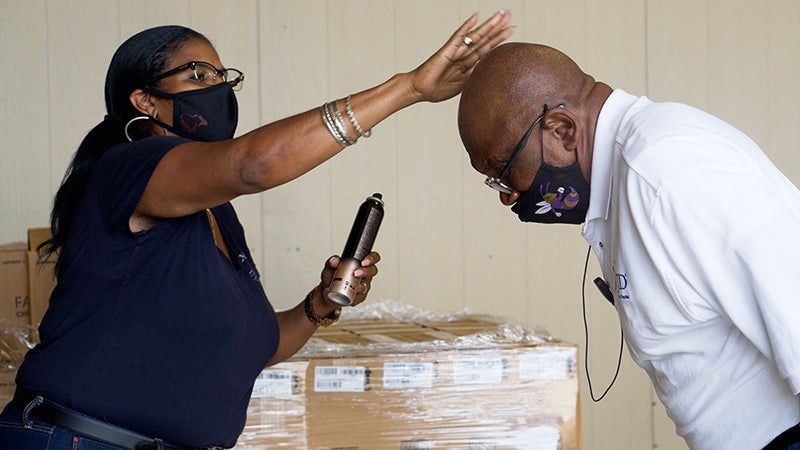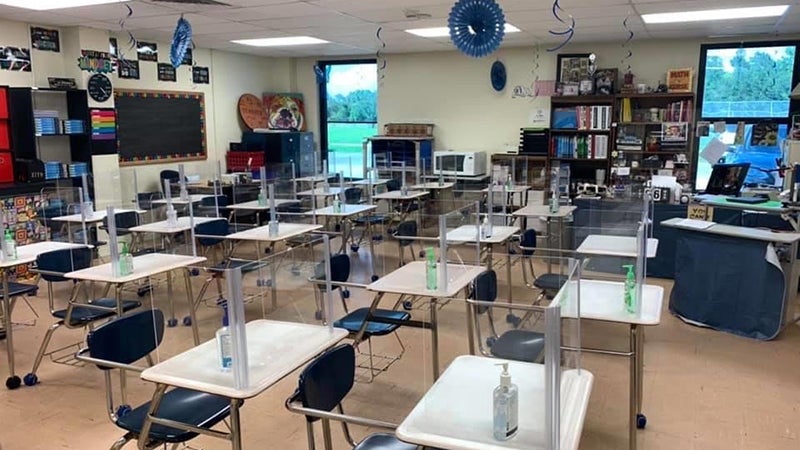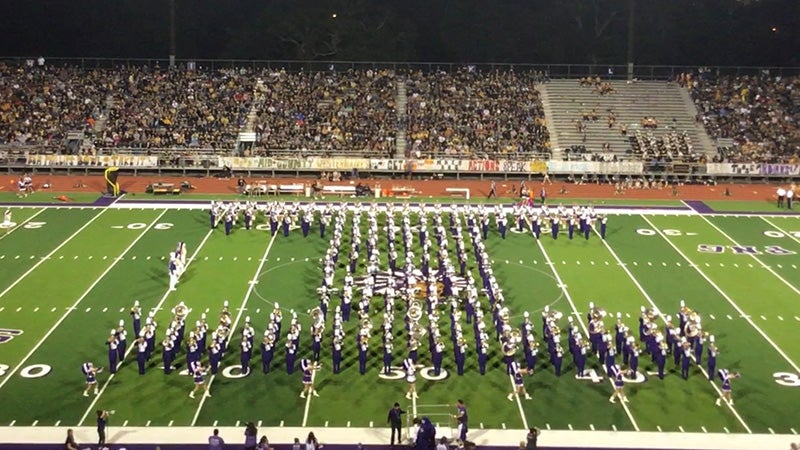School COVID relief funds on the way; local districts share plans
Published 12:30 am Saturday, May 1, 2021

- Memorial High ISD Cosmetology Director Yvonne Wesley, left, demonstrates how to use a shining solution with Memorial High School Principal Dr. Glenn Mitchell. (Cassandra Jenkins/The News)
|
Getting your Trinity Audio player ready...
|
An $11.2 billion pot of money earmarked for school districts and open enrollment charter schools in Texas has been made available, making local education leaders very happy.
Earlier this week the Texas Education Agency announced the release of the funds appropriated to the State of Texas under the American Rescue Plan Act through the Elementary and Secondary School Emergency Relief III Fund.
Port Arthur Independent School District Superintendent Dr. Mark Porterie said the district is very pleased and appreciative of the funding.
“We understand that the funds are to be used to address the learning loss our children have experienced since the beginning of COVID-19. There is so much that we have to do in order to get back to a normal educational track and these funds will assist us in addressing the needs of students and their families,” Porterie said. “We have a huge opportunity of making some positive changes in our educational system in Texas, especially Port Arthur, and we will need our entire community to come together in order to make it happen.”
According to TEA, the United States Department of Education has only released two-thirds of the state’s allocation to TEA. The remaining one-third of the state’s allocation is expected to be released late this spring after an application process is completed by the state and reviewed by USDE.
Phyllis Geans, PAISD assistant superintendent of business and finance and CFO, explained the stimulus monies are tied to COVID-related expenses, some of which have been incurred and some the district will incur in the future as they address needs.
When the pandemic hit, school districts incurred unexpected costs from feeding students to making sure schools were clean.
Dr. Mike Gonzales, superintendent for Port Neches-Groves Independent School District, said many people might not realize school districts have dealt with the pandemic for more than one school year.
“People forget this has been something we’ve been dealing with over a year because when we stopped going to school last March we didn’t stop serving students,” Gonzales said. “Just because they didn’t come to school we were still seeing kids.”
PNGISD, like other districts, found a way to feed students with the use of staff and buses. Then there was the purchase of a ‘fog machine’ to disinfect schools and classrooms.
“It (change) became the way of life for us,” he said. “We’d do anything and everything to protect kids and the staff.”
PNG is looking to add additional instructional staff to provide for small group instruction, additional learning opportunities and classroom support including additional paraprofessionals on all elementary campuses to serve kindergarten to second grades and summer programs for acceleration and enrichment including other uses.
Nederland Independent School District said the funding will help in two ways. To recoup some of the loses during COVID and will allow the district to remediate students who had learning loss due to COVID including paying for changes such as tutoring and expanded summer school.
The learning loss is different for every student, Kieschnick said, and NISD is gong to work to remediate individual students and their individual needs.
Required uses
There are requirements tied to the funding. A minimum of 20 percent of the grant funds must go to evidence-based interventions such as summer learning, extended day comprehensive after-school programs or extended school year programs and to ensure the interventions respond to students’ academic, social and emotional needs and address disproportionate impact of coronavirus on student populations as defined in the Elementary and Secondary Education Act Title I, Part A; students experiencing homelessness; and youth in foster care, according to TEA.
Here’s a look at what local school districts and charter schools will see in this new round of disbursements:
- Port Arthur ISD: initial allocation of $18.4 million, second allocation of $9.2 for a total of $27.6 million
- Port Neches-Groves ISD: initial allocation of $3.5 million, second allocation of $1.7 million for a total of $5.2 million
- Nederland ISD: initial allocation of $3.1 million, second allocation of $1.5 million for a total of $4.7 million
- Sabine Pass ISD: initial allocation of $661,593, second allocation of $330,797 for a total of $992,390
- Bob Hope School: initial allocation of $3.2 million, second allocation of $1.6 million for a total of $4.8 million
- Tekoa Academy of Accelerated Studies STEM School: initial allocation of $880,807, second allocation of $440,403 for a total of $1.3 million





